After visiting the atomic bomb site in Nagasaki, we took a bus ride to Dejima. This was an interesting stop which highlighted the closed nature of Japan’s society for much of their history. The small island was established to house Portuguese traders to help Japan keep a “foot in the door” of international trade and still keep foreigners segregated to avoid the spread of Christianity and perhaps other undesirable customs. According to Japan Visitor, the literal translation of Dejima is Exit Island.
Dejima, Japan
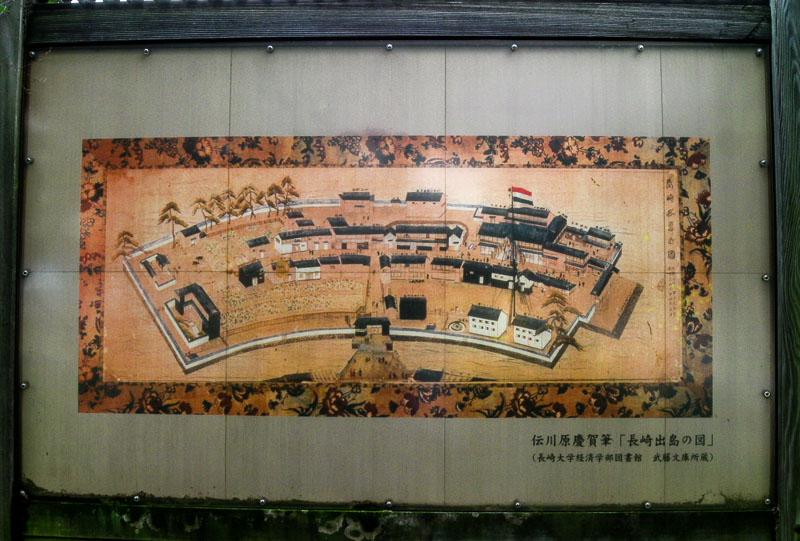
Close to where the tour buses park, there is a small schematic of Dejima
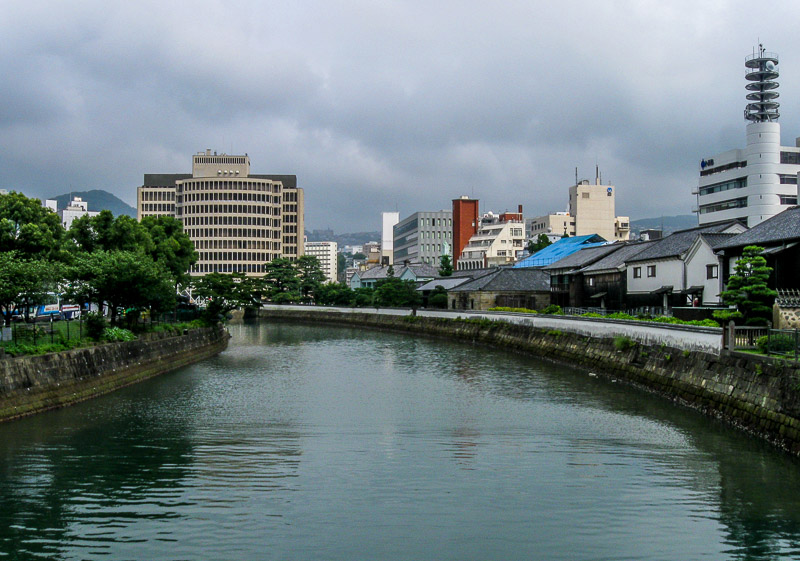
This is the body of water on which the island was constructed. Dejima is pictured in the foreground on the right
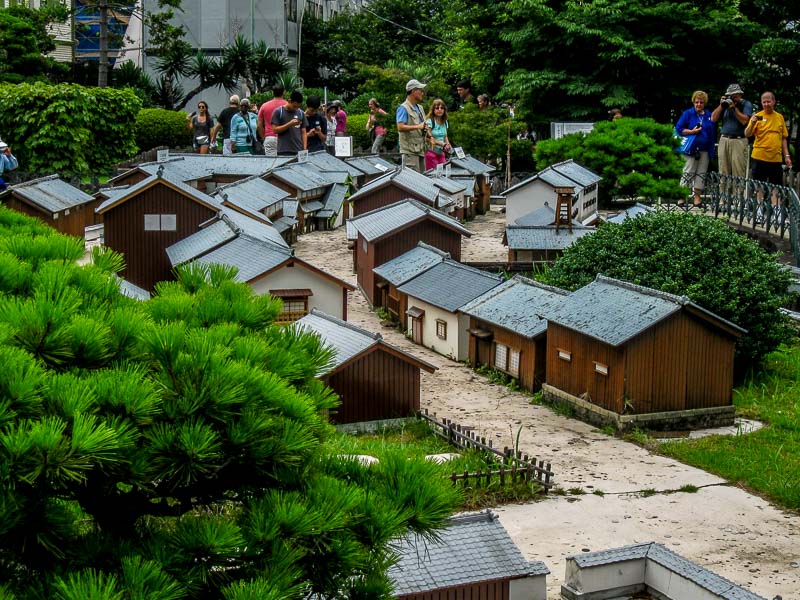
A model replica of the village is on display to help visitors gain an overall understanding of the island’s geography.
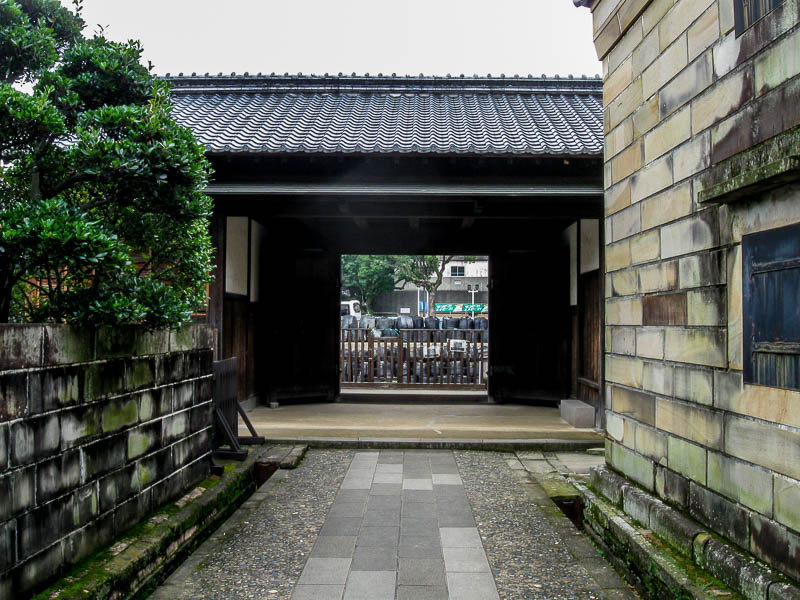
The small opening was used for moving cargo and allowing passengers to enter the cloistered island.
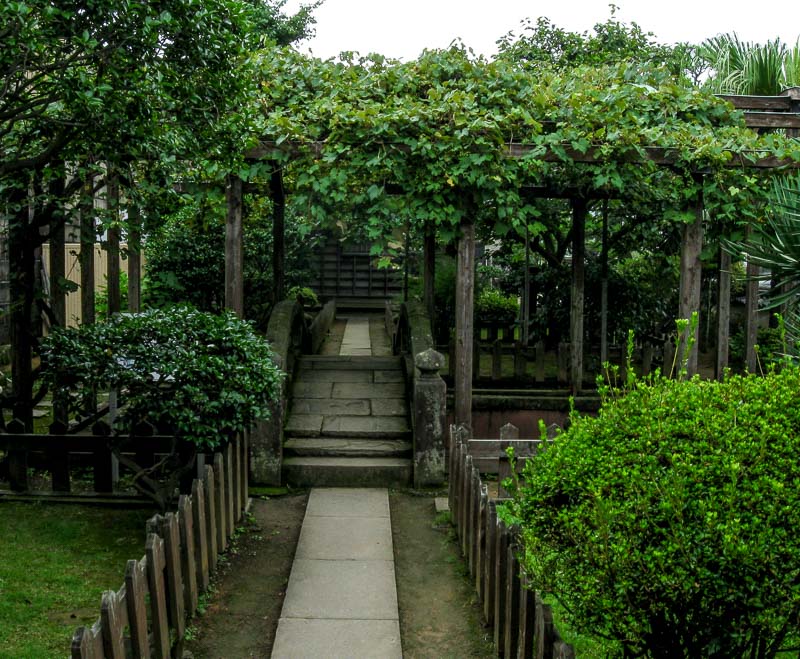
As elsewhere throughout Japan, gardens were represented.
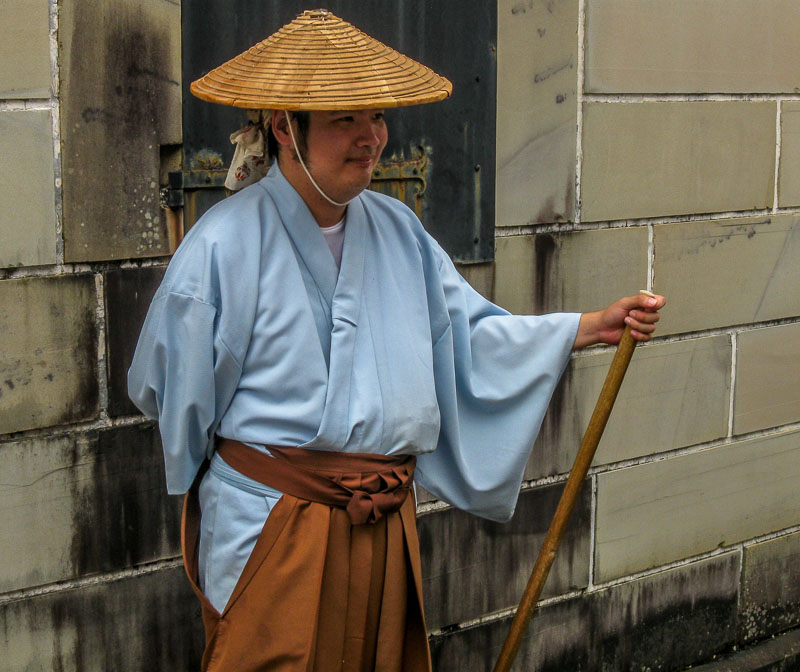
This man is wearing the traditional clothing of the day in Dejima
Glover Garden
As though Nagasaki and Dijema weren’t enough for one day, we had another very engaging attraction to visit. I was looking forward to this particular stop because I enjoy gardens and this one was somewhat special.
In contrast to the horror of the devastation of the atomic bomb hypercenter in Nagasaki, Glover Garden was a place of beauty and a celebration of nature.
Thomas Glover was a business-minded Scotsman who was instrumental in opening Nagasaki to foreign trade. He also is given credit, at least in part, for the development of the Mitsubishi steel works as well as the Kirin beer company. He has been dubbed “The Scottish Samurai” to underscore his contribution to the industrialization of Japan.
From the dock area, we took a short upward trek toward the hilltop garden.
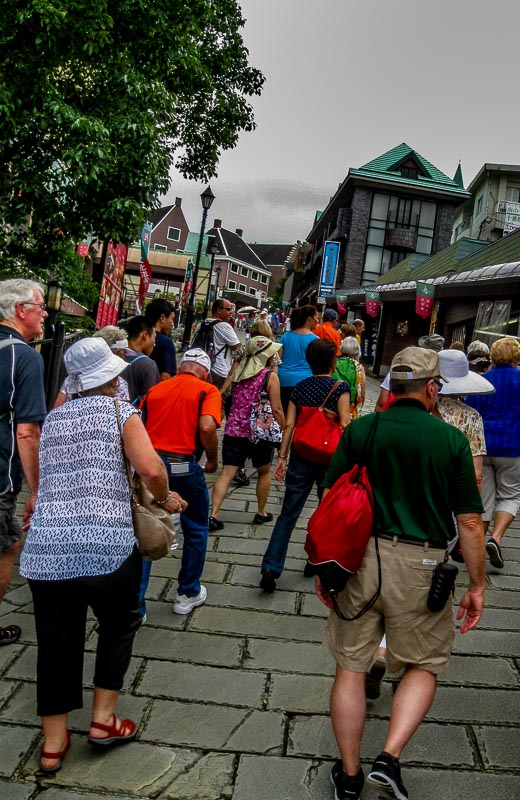
Near the crest of the hill, just outside of the garden, was Oura Catholic Church constructed around 1865. It is considered the oldest standing Christian church in Japan and was originally built for the foreign merchants who were moving to Nagasaki at the end of the era of seclusion to take advantage of trade.

The sides of the street leading up to the church and Glover Garden contained copious shops which catered to a wide variety of tourist and non-tourist interests. For those with a passion for Halloween or Dia de los Muertos …
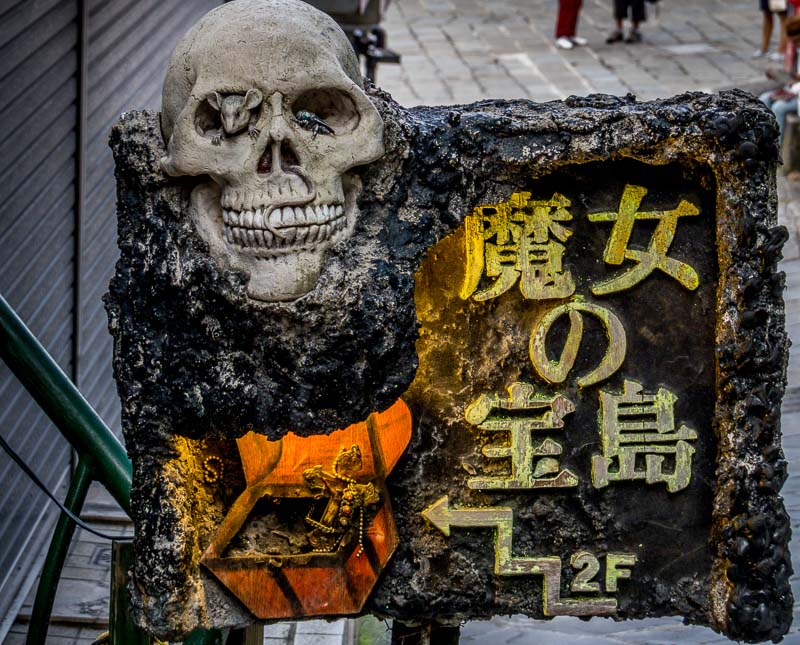
Formal columned lamp posts support an ornamental metal sign signalling the entrance to the garden.
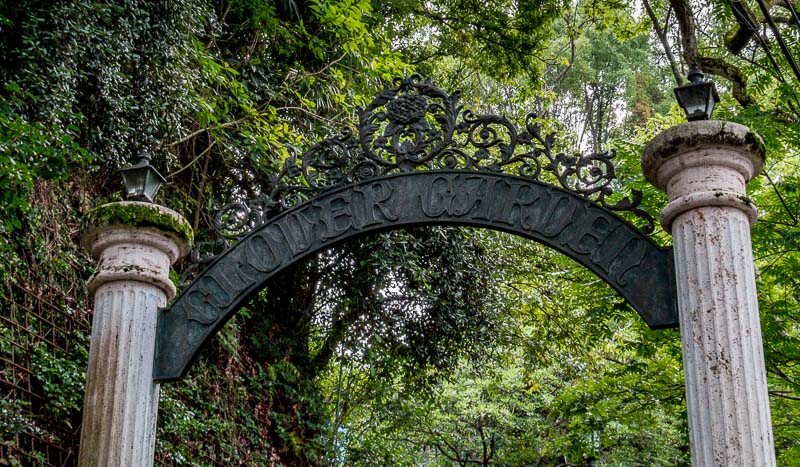
As one might expect, there were a number of well-groomed, smaller display gardens.
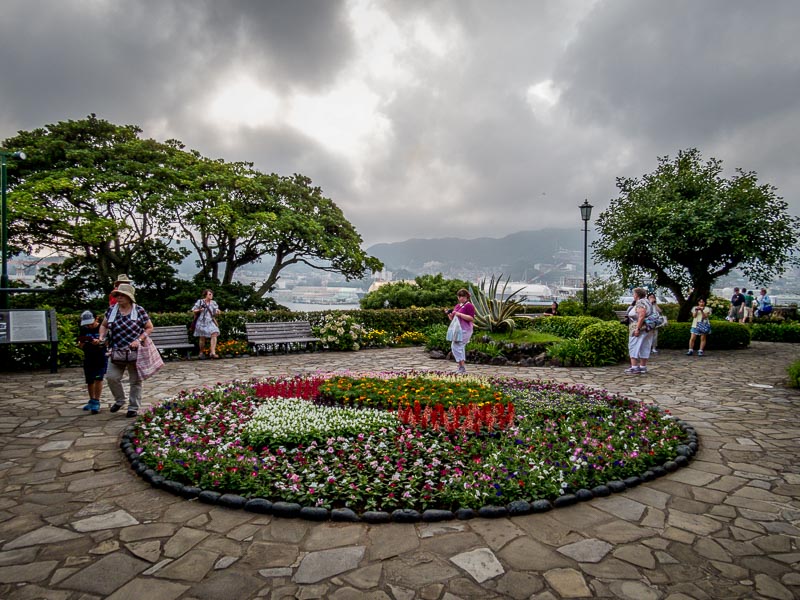
Also spectacular were the views from the top of the hill as the threatening clouds began to roll in.
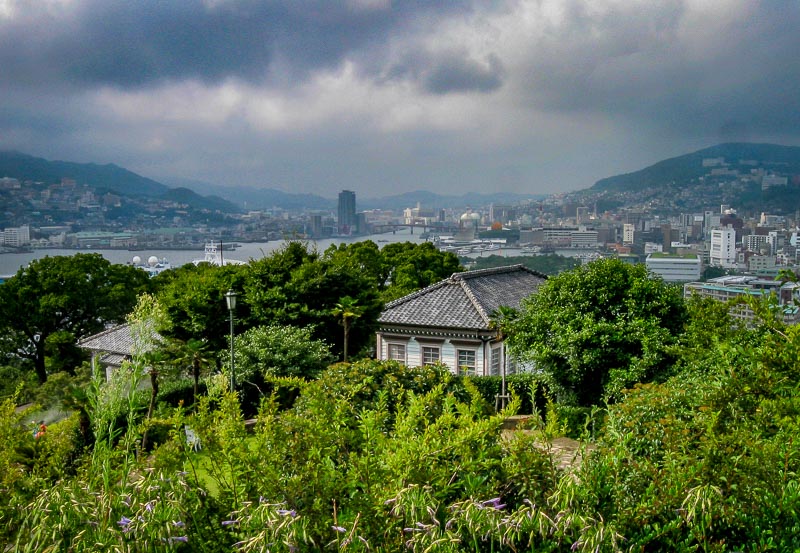
Below is a photograph of a group of houses alongside the hill with the top of the Oura Church jutting up between them and the garden.
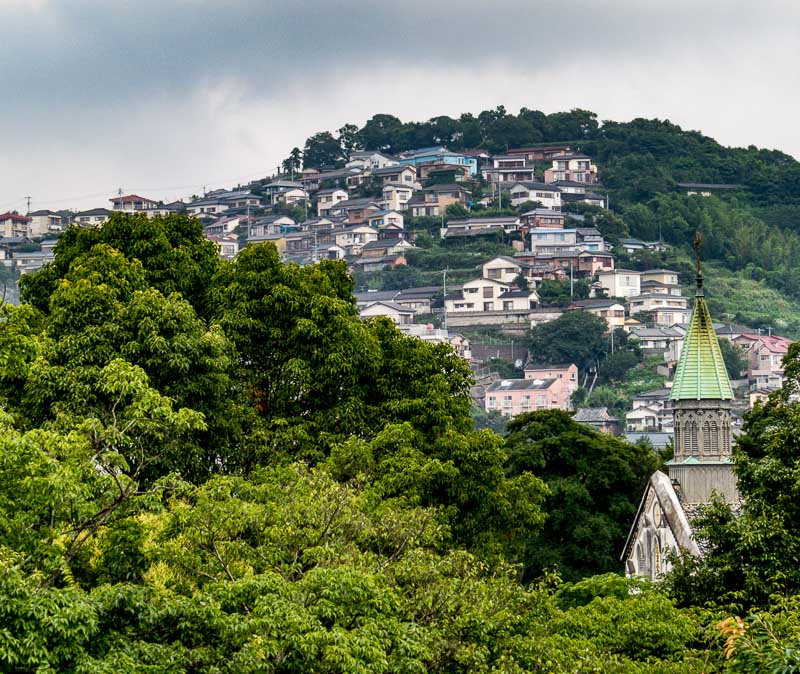
More houses could also be seen near the garden from the opposite side of the overlook.
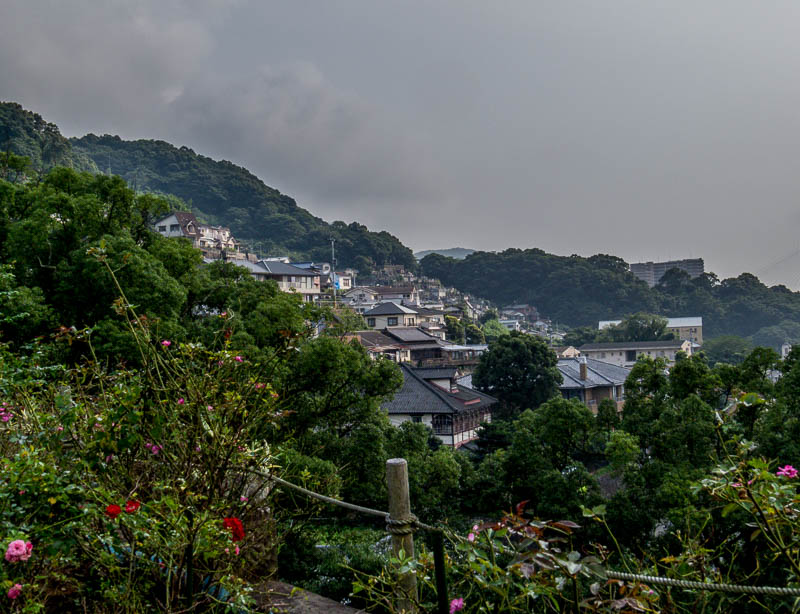
A panoramic view of he harbor shows our ship and a number of buildings in the foreground near the port.

Formal gardens often have sectioned off areas sometimes referred to as “rooms” which create a mood of their own. This alcove with a variety of shrubs and small trees, pays homage to a more classical Japanese style.
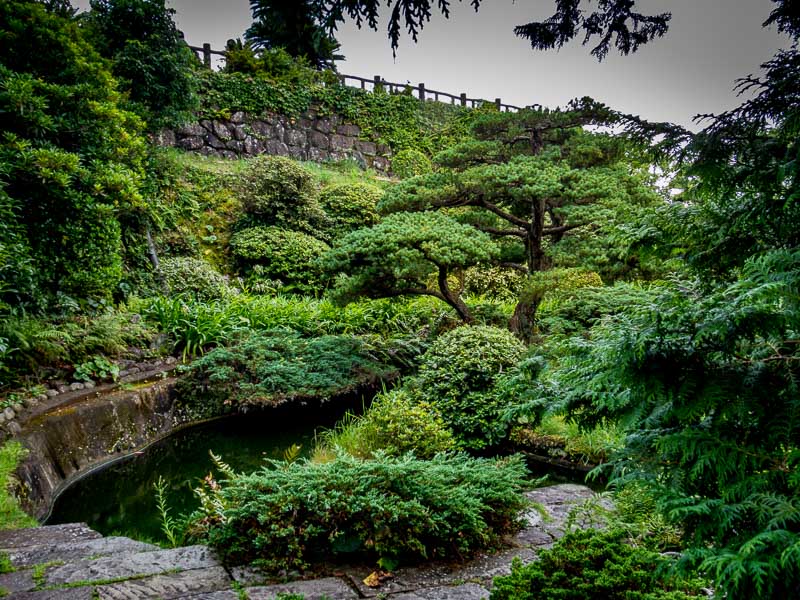
There is an association of Glover Garden with the story of Madame Butterfly.
“Another claim to fame is that Glover’s Japanese wife Tsuru, whom he married in 1867, is said to have been the inspiration for “Madame Butterfly”, a story written by the American author John Luther Long, and later turned into the famous opera by Puccini and first performed at the Scala, Milan, in 1904. Tsuru had been obliged, at the age of 17, to divorce her first husband, a samurai, due to political differences between her family and his at the time of the overthrow of the Tokugawa Shogunate, and was thus separated from her baby daughter, Sen. However, there the resemblance between Tsuru and the fictional character ends, for although there may have been a suicide attempt, she lived to marry Thomas Glover, and to give birth to Hana and Tomisaburo (“Tommy” to his father). Tsuru’s nickname was “Och-san”, from the butterfly motif on her kimono, hence the name of the popular opera heroine.” Via Rampant Scotland
A statue of Puccini, with a small butterfly on his left shoulder, was placed in the garden to acknowledge this strong association.
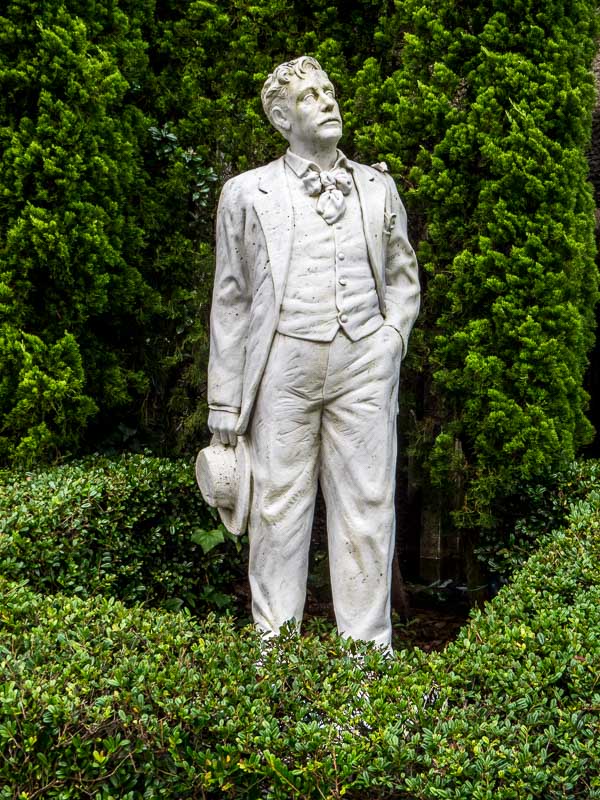
Nearby, the likeness of diva Miura Tamaki as Madame Butterfly further underscores this relationship.

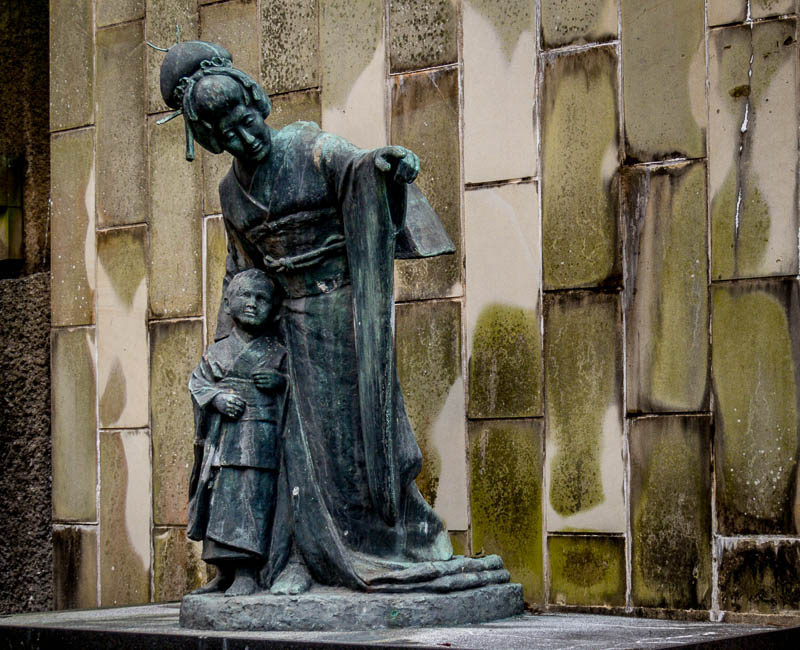
Water features provide a sedate aura to a garden and this wall of dripping water with cascading foliage achieved this goal.
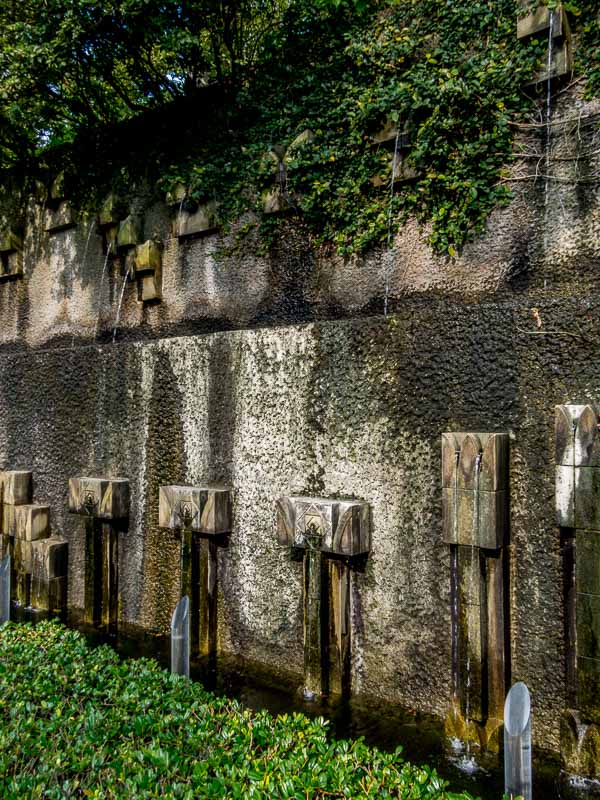
Another feature, similar in style, added flower boxes in front.

It would not be a garden in Japan without a koi pond …

which even pleased the birds!

Heading back to the ship, a stone planter with lantana attracted a real butterfly.
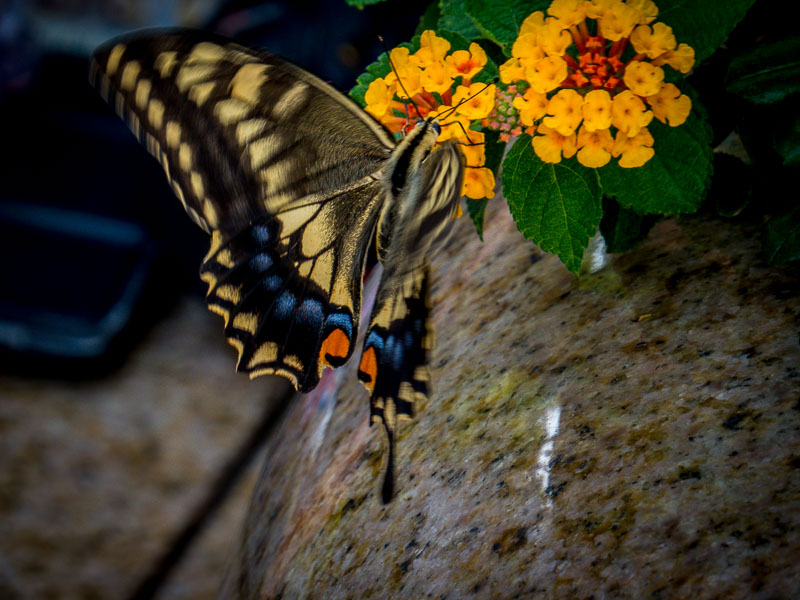
Descending the steep street on the way to the pier, this courtyard beckoned with the decorative path and neatly trimmed garden.

Upon approaching the pier, I noticed a parking area that had a bright yellow wall with a dragon statue across the top.
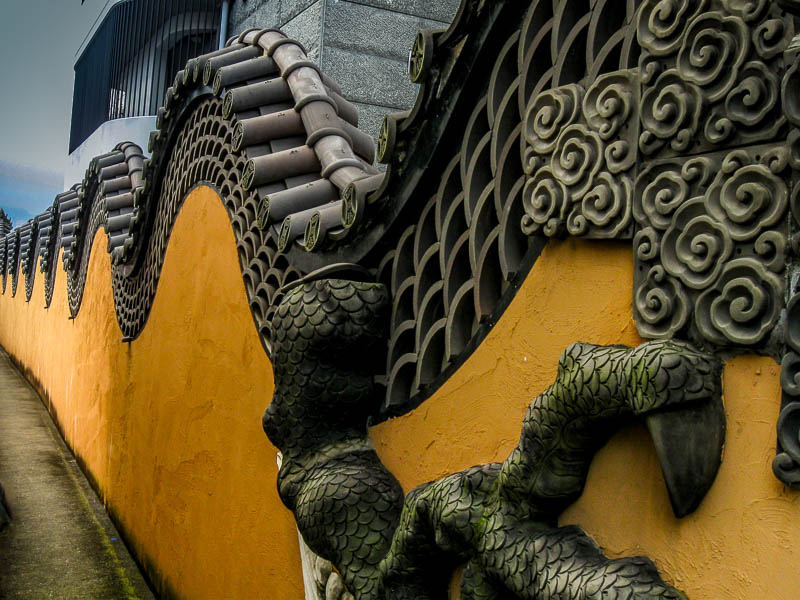
This did not appear to be the friendly dragon from a Disney film.
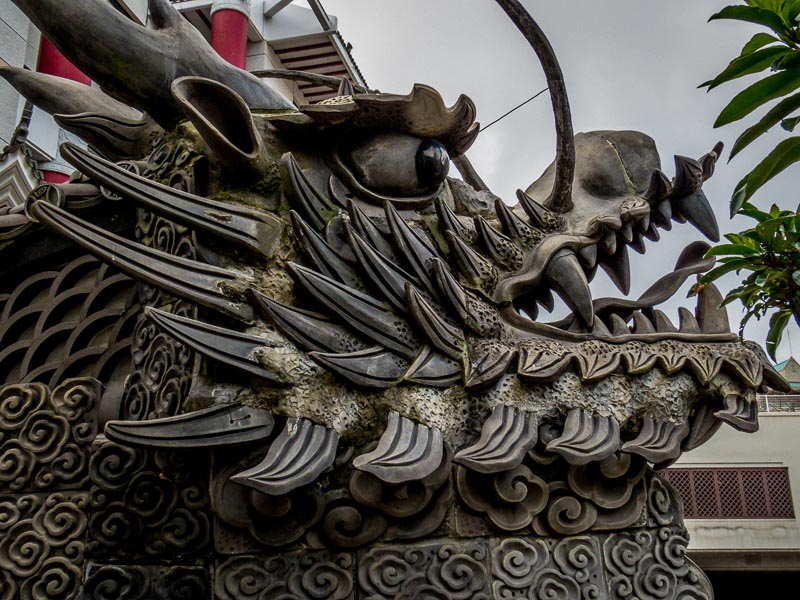
We were physically and perhaps a bit emotionally tired from the exploits of the day and were glad to board the ship and have a respite before dinner.
Read more about our trip to Japan in 2015:
- Tokyo (2015) Day 1 – Meiji Shrine
- Tokyo (2015) Day 1 – Imperial Palace East Gardens
- Tokyo (2015) Day 1 – Sensoji (Asakusa Kannon) Buddhist Temple
- Tokyo (2015) Day 1 – Wrapping Up
- Tokyo (2015) Day 2 – Off To Mount Fuji And…
- Tokyo (2015) Day 2 – Hakone, Lake Ashi and Mt. Fuji
- Tokyo (2015) Day 3 – Part 1 – Shinjuku Gyoen Garden and Harajuku St.
- Tokyo (2015) Day 3 – Part 2 – Hama-rikyu Gardens, Shibuya Station & Shopping